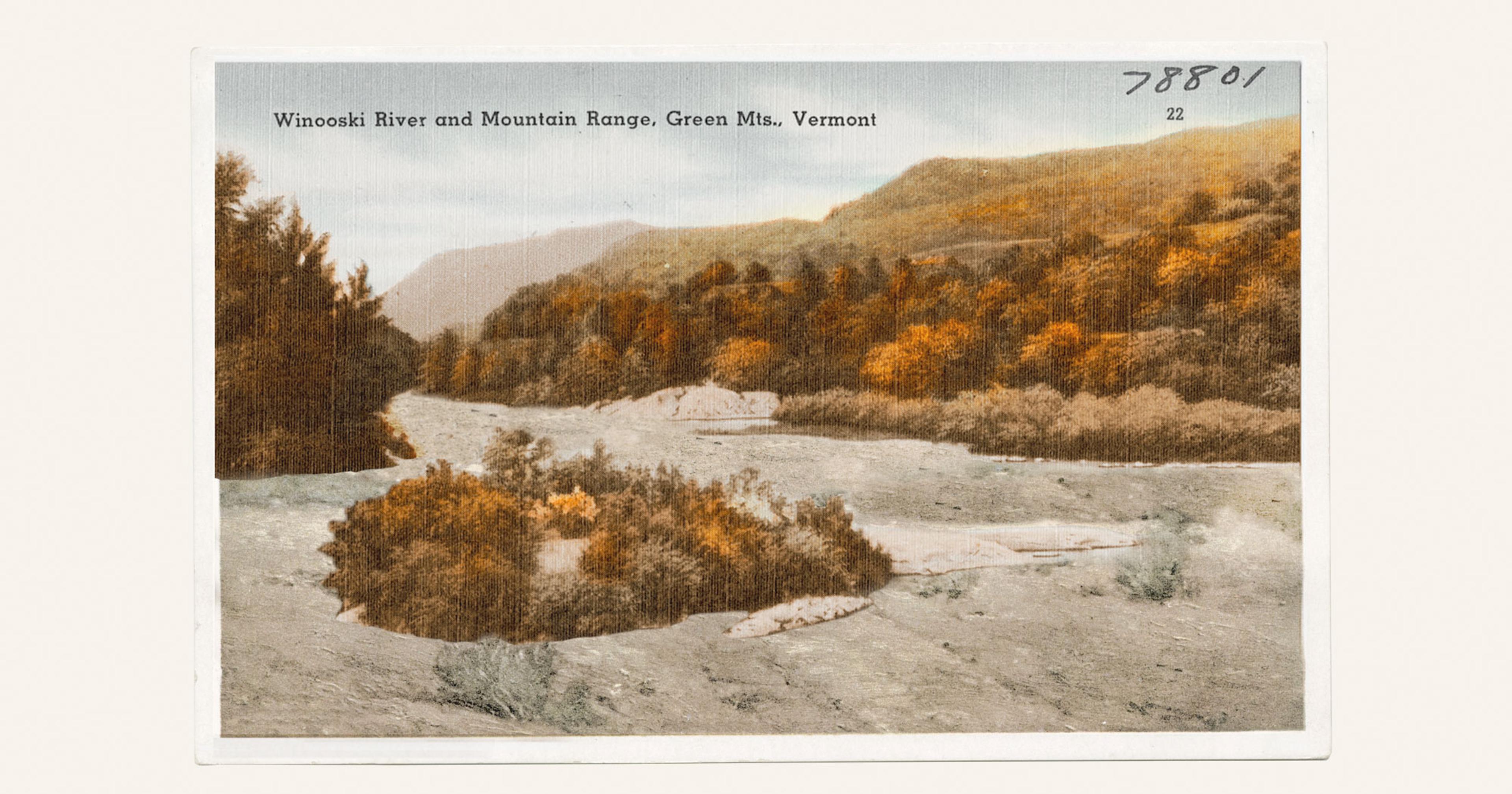The future of cranberries in Massachusetts and New Jersey will need to be managed very carefully to survive.
After contending with years of unpredictable weather and market conditions, some cranberry growers breathed a sigh of relief in the lead-up to Thanksgiving. The 2022 harvest was a relatively fruitful one, with crop yields expected to surpass last year’s. But some of our biggest cranberry-growing regions have shown signs of struggle — an ongoing trend that is beginning to raise concern.
While native to North America, cranberries can’t grow just anywhere. The finicky plant requires a perfect cocktail of environmental factors: sandy soil, loads of water, not to mention sufficient chilling hours during its winter dormancy period. That perfect trifecta can only be found in a handful of places, many here in the United States. The U.S. is the world’s leading producer; together with Canada and Chile, we account for 97% of the global cranberry supply. We’re also the world’s top buyers, consuming nearly 400 million pounds of cranberries (mainly in the form of juice) each year — 20% of which happens during the week of Thanksgiving.
But as a shifting climate raises temperatures and triggers drought, causing the country’s annual cranberry haul to steadily drop since peaking in 2016, researchers and growers are reevaluating the crop’s future. Meanwhile our northern neighbor Canada is upping production to fill gaps in the global supply.
“If you take cranberry plants and grow them in Arizona, they’ll grow up nice and bushy and green and healthy, but they’re never going to produce fruit.”
Cranberry cultivation in the U.S. dates back to 1816, when farmers on Cape Cod realized that the area’s wild cranberry vines grew better in sand and began converting swamps and wet meadows into bogs. From 1885 to 1900, the number of cranberry bogs under cultivation in Massachusetts tripled. It was here that the first cranberry research center was established in 1910, and where Ocean Spray — a cooperative now owned by more than 700 cranberry farmers nationwide who are responsible for 65% of the world’s supply — was formed in 1930.
The cultivated cranberry industry migrated to New Jersey by the 1830s, Wisconsin by the 1850s, and the Pacific Northwest by the 1880s. Yet Massachusetts remained the top producer of cranberries and cranberry products like juice and Craisins (dried cranberries), first invented and marketed by Ocean Spray in 1989. That is, until Wisconsin surpassed the state’s cranberry yields in the 1990s.
Wisconsin, whose state fruit is the cranberry, now accounts for more than 60% of the nation’s crop, and more than 50% of the world’s cranberry supply (despite the efforts of Massachusetts’ Cranberry Revitalization Task Force). According to the latest USDA report, this year’s national cranberry crop is estimated at 7.44 million barrels, smaller than any of the previous three years. Wisconsin is expected to produce 4.3 million of those barrels, leaps and bounds above similar predictions for the second and third largest cranberry states, Massachusetts (2 million barrels) and New Jersey (550,000 barrels). Smaller amounts are expected from Oregon, Washington, Maine, Michigan, Connecticut, and New York.

Positioned well for the future, Wisconsin, with its abundance of lakes and rivers and reliably cold (for now) winters, offers an ideal habitat for the hardy cranberry vine to thrive in. That’s because the perennial plant requires a certain number of chilling hours — hours of temperatures that fall between 32ºF and 45ºF — to complete its dormancy period.
“If you don’t have enough chilling hours, the plants will not blossom,” explained Allison Jonjak, cranberry outreach specialist for the agricultural extension program at the University of Wisconsin, Madison. And without any blossoms, there will be no berries. “If you take cranberry plants and grow them in Arizona, they’ll grow up nice and bushy and green and healthy, but they’re never going to produce fruit.”
Even minor temperature changes can hinder the success of a cranberry crop. That means cranberry bogs in New Jersey’s Pine Barrens region, historically a mecca for cranberry growers, are more fragile in the face of climate change. As are those on or near Cape Cod, where cranberries have long been an important part of the local economy.
Until this year, cranberries were the top earner of Massachusetts’ agriculture industry, with an annual crop value of $66 million. As reported in Leafly’s 2022 cannabis harvest report, cannabis has now overtaken cranberries as the state’s most valuable crop, responsible for $362 million in annual wholesale value. That’s partly due to the state’s cannabis’ legalization in 2016 and its thunderous popularity, but it also comes at a time when the lowly cranberry is struggling. Not to mention that most Massachusetts cannabis is grown indoors, meaning growers don’t need to contend with the changing weather patterns that cranberry producers do.

And it’s those unpredictable patterns that have growers concerned. “Farmers wake up every day and they have to face whatever the weather is going to present to them — that’s farming,” Brian Wick, executive director of the Cape Cod Cranberry Growers’ Association, told Grist in September. “But it’s quite clear in talking to many growers over the past several years that this change in climate is very real and it’s really starting to impact how they farm.”
Massachusetts’ warmest years on record have all occurred in the last 20 years, with average air temperature in the Northeast rising at a rate of 0.5ºF per decade since 1970. Meanwhile, the Garden State’s average temperature has warmed faster than any other state in the last 100 years, according to a 2021 report based on data collected by the National Oceanic and Atmospheric Administration. During milder winters, it becomes difficult for a cranberry plant to experience those crucial chilling hours.
“For the past 10 years, one of the most significant challenges has been the high nightly lows in the fall,” said Hilary Sandler, director of the UMass Cranberry Station in East Wareham, Mass. “In 2017, we had three nights in September that got down to only 70, when we really need to have temperatures in the 50s. When you’re having a low of 72 on September 12, you know, you just want to shoot yourself.”
In Wisconsin, by comparison, temperatures during that vital point in the growing season have remained on average much lower. Despite the state also experiencing a gradual increase in daily temperatures, September nights have remained much cooler than in the Northeast.
Inconsistent temperatures can also make it difficult for the berries to achieve their bright crimson color. If it doesn’t cool down enough after sunset, cranberries won’t fully mature, instead staying pale pink or white in color. “If I’m Ocean Spray, and I’m making juice, if I’ve got 100 berries, and five of them are white, it all comes out in the wash,” said Sandler. “But if 60 of them are white, then I might start seeing a color alteration in my final product, and that’s not acceptable for the consumer.”
Warmer temperatures also mean the plants are at a greater risk for disease. “Another benefit of having a cold winter is that the cold kills pathogens. The milder your winter, the more pathogens you have survive year to year,” said Jonjak. “So it’s kind of a compounding effect that gets worse and worse.”
To further complicate issues, because one-third of the U.S. cranberry crop goes to the export market, growers must comply with agricultural regulations in the countries they sell. “That’s a whole ’nother layer that growers have to deal with,” said Sandler. The EU — the largest importer of American cranberries — has a long list of pesticides and fungicides that cannot be used on agricultural crops. But if warmer temperatures and ongoing drought causes invasive insects and plants to move further north into cranberry bogs, and growers can’t use fungicides to fight them off, then growers have to find new ways to battle them.
“There’s such a limited list of acceptable fungicides for export into every country,” said Jonjak. “As a grower, you really like being able to rotate what fungicide you’re using year to year so the [pests] do not become resistant. But so few are legal … so we kind of feel our hands are tied.”
“When you’re having a low of 72 on September 12, you know, you just want to shoot yourself.”
Perhaps the most important resource for cranberry cultivation is water. On average, cranberries need about an inch of water a week to grow. Farmers also use water to protect the berries from frost and hot weather, and again to harvest, when they flood the bogs with up to one foot of water. Cranberries have little air pockets inside, which causes them to float up to the top, making them easier to collect. Anybody who’s watched an Ocean Spray commercial knows what this wet method of harvesting — now the norm for about 95 percent of all cranberries — looks like.
But without enough water to pump through the bog systems, typically from grower to grower, harvesting cranberries gets complicated. From start to finish, each acre of cranberries will use seven to 10 feet of water to meet all production, harvesting, and flooding needs. So when a region is battling a persistent drought — as has been the case in Massachusetts — cranberries suffer.
“Rising temperatures seem like something that’s pretty adaptable for most crops. If we shift everything two miles north every decade, we can keep pace with it,” said Jonjak. “But the thing that’s harder to plan for on shorter notice is the changing precipitation patterns. And there’s a lot less you can do to adapt to a lack of water.”
So will producers someday need to move operations further north? It depends. “We in Wisconsin are a long way off,” said Jonjak, who predicts the state is “basically going to be the last man standing.”
While Wisconsin cranberry researchers are currently studying and developing ways to adapt and mitigate the effects of climate change — including breeding disease-resistant cultivars and minimizing water requirements — the most severe effects won’t be felt for a while. “Even the worst predictions of climate change don’t have us in Wisconsin having a not dramatic enough winter [to sustain cranberries] for another 150 more years,” said Jonjak.
In Massachusetts, Sandler is cautiously optimistic that changing weather patterns won’t completely eradicate her state’s cranberry industry. “The sort of joke is that Massachusetts is going to become the new New Jersey,” she said, referring to rising temperatures. “What does that mean for New Jersey? I don’t know.”








